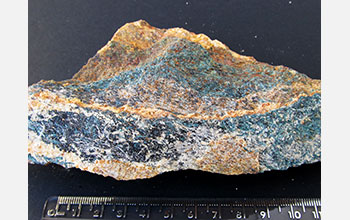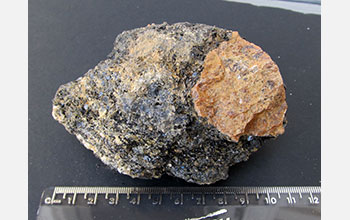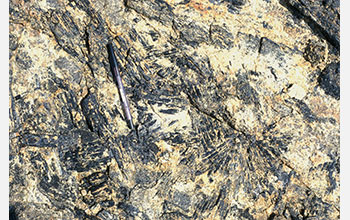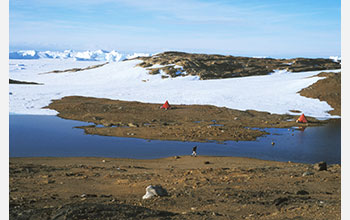Paranapanema, SP - Brasil - / Being useful and productive is the aim of every knowledge acquired / - Quod scripsi, scripsi. - Welcome !
sábado, 9 de maio de 2015
Minimalist Candyland Series / Under Neon Light Portraits
« MinimalBeirut » est une série éditoriale pour Plastik Magazine en collaboration avec le photographe texan, Matt Crump et sous la direction créative de Ryan Houssari. Le concept de cette série intensément colorée est de transformer la ville de Beyrouth en un monde imaginaire aux connotations gourmandes et sucrées.
Basé à Los Angeles, le photographe Nikko La Mere a réalisé une série de clichés toute en lumières, intitulée « After Hours » et où les modèles sont illuminés par l’éclairage des néons, une fois la nuit tombée. Ces éclairages colorés apportent une profondeur aux traits des modèles et sublime l’atmosphère des photographies.
A Future Fit Band for Diabetes
Glycount is a wearable diabetes management system based on near-future tech that enables users to measure blood sugar levels instantaneously, continuously and without any invasive skin pricking. A long-lasting E-ink display relays vitals in real time and displays reminders for insulin and pill dosage times. A tethered connection keeps kin and doctors in-the-know and allows all involved to review personalized sugar trend graphs for better management.
Designer: Indrajeet Bakhale
Geometric Illustrations Portraits of Celebrities
Basé à Glasgow, le graphiste Jack Daly a réalisé toute une série d’illustrations digitales représentant des hommes célèbres tels que John Lennon ou Alfred Hitchcock. Grâce à des jeux de teintes et des formes géométriques assemblées, il reproduit la morphologie et les caractéristiques de ces personnages iconiques.
The Russian Air Force's Super Weapon: Beware the PAK-FA Stealth Fighter
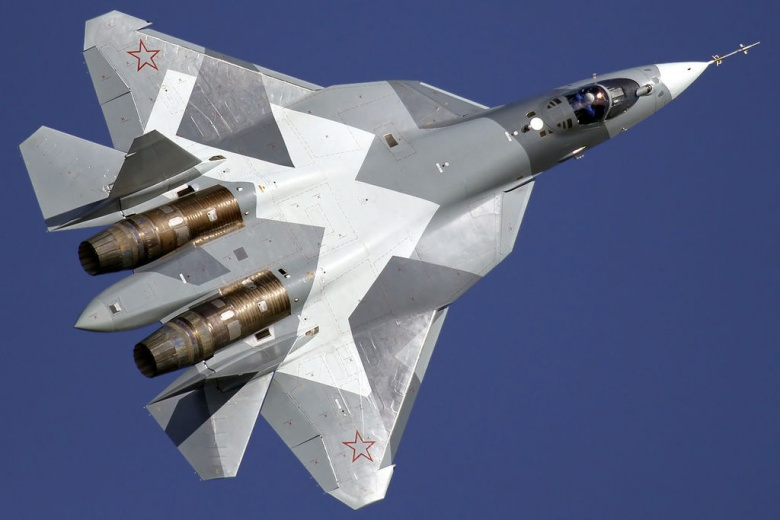
Should the West be worried about Russia's next-generation fighter-jet?
The Russian Sukhoi T-50 PAK-FA stealth fighter could prove to be a formidable competitor to American fifth-generation combat aircraft such as the Lockheed Martin F-22 Raptor and F-35 Joint Strike Fighter. Indeed, in some measures, the new Russian warplane will exceed both U.S.-built jets, but the PAK-FA is not without its flaws.
“The analysis that I have seen on the PAK-FA indicates a pretty sophisticated design that is at least equal to, and some have said even superior to U.S. fifth-generation aircraft,” former U.S. Air Force intelligence chief Lt. Gen. Dave Deptula told the National Interest. “It certainly has greater agility with its combination of thrust vectoring, all moving tail surfaces, and excellent aerodynamic design, than does the F-35.”
Indeed, the PAK-FA appears to be optimized for the air-superiority role like the F-22 more so than the multirole, strike-optimized F-35. Like the Raptor, the PAK-FA is being designed to fly high and fast to impart the maximum amount of launch energy to its arsenal of long-range air-to-air missiles—which would greatly increase the range of those missiles.
“Performance-wise it certainly looks to compete with the Raptor,” one senior military official with extensive experience on U.S. fifth-generation fighters told the National Interest.
(What You May Also Like: 5 NATO Weapons of War Russia Should Fear)
Like the F-22, the Russian machine is expected to be able to cruise supersonically for extended periods of time—probably faster than Mach 1.5. The aircraft’s maximum speed should be greater than Mach 2.0—assuming its low observables coatings can handle the stress.
However, unlike the American fifth-generation aircraft, the PAK-FA places less emphasis of stealth, and much more emphasis on maneuverability. While it could compete with the Raptor in terms of raw kinematic performance, the PAK-FA greatly exceeds the F-35. And that performance margin might increase.
(What You May Like: 5 Russian Weapons of War NATO Should Fear)
The Russian aircraft is currently powered by modified versions of the Su-30 Flanker’s engines called the Izdeliye 117 or AL-41F1, which produce about 33,000 pounds of thrust. The engine, which runs far hotter than the original AL-31 engines from which it was derived, is not proving to be as reliable as initially hoped. But the current engines are only temporary. Later production variants of the PAK-FA are expected to be powered by a new engine called the Izdeliye 30, which should enter service in 2020.
The Russian jet is also equipped with a powerful avionics suite, which is an evolution of Sukhoi’s work on the Flanker-series fighters. “Indications are that the avionics are derived from the Su-35S with the addition of a very high power-aperture X-band multimode AESA radar,” Deptula said.
Further, there are indications that the PAK-FA is also equipped with L-band radar arrays, which are able to detect the presence of a fighter-sized stealth aircraft. While the L-band radar would not allow the PAK-FA to target a stealth aircraft, it would allow the pilot to focus the jet’s other sensors on a particular area of the sky.
In addition to radars and electronic support measures, the PAK-FA is equipped with infrared search and track capabilities.
While the Russians have made enormous leaps in their sensor capabilities, U.S. warplanes still hold the edge in terms of sensor and data-fusion, which is critical for modern warfare. “The real question is can the Russians achieve the same degree of data fusion and networking capabilities of the F-22A and F-35—right now I’d put my money on the U.S. and our allies in that regard,” Deptula said.
(You May Also Like: 5 Ways Russia Could Help China's Military Become Even Deadlier)
A senior U.S. industry official agreed with Deptula’s assessment. In terms of its avionics, the PAK-FA is closer to a Boeing F/A-18E/F Super Hornet or F-16E/F Block 60 than an F-22 or F-35. “Some may claim that the PAK-FA is a 5th gen. fighter, but it's more of a 4.5 gen. fighter by U.S. standards,” the industry official said.
In fact, the PAK-FA’s lack of true sensor fusion and comprehensive data links that are on par with its American counterparts may prove to be its Achilles’ heel. U.S. strategists are moving towards an approach where every aircraft or surface ship can act as a sensor for any aircraft, ship or vehicle that carries a weapon. The launch aircraft might not even guide the weapon once it has been fired. The U.S. Navy is already implementing a construct called the Naval Integrated Fire Control-Counter Air (NIFC-CA) that would do just that. The Air Force, too, is working on something similar.
“In the future—while aerodynamic performance will continue to be important—speed, range and payload to a greater degree than maneuverability. Even more important will be the ability to ubiquitously share knowledge to the point that we have faster decision advantage than any adversary,” Deptula said. “This is the notion of the ‘combat cloud.’ It’s more about how we integrate the sensor-shooters that are resident in systems coming online, more than it is about new platforms.”
(You May Also Like: 5 Most Powerful Russian Weapons of War in the Sky)
Protecting mineral treasures of Antarctica's Larsemann Hills - 4
|
Blue prisms of the borosilicate grandidierite in gneiss with the aluminosilicate sillimanite (white prisms) and the borosilicate tourmaline (dark) can be seen in this sample from the Wilcock Bay area on the southern Stornes Peninsula. The sample was collected as part of a research study of minerals in the Larsemann Hills in Antarctica.
You can read the entire story about this expedition online in Earth magazine, "Protecting the mineral treasures of Antarctica's Larsemann Hills." Credit: Edward S. Grew, University of Maine
|
Protecting mineral treasures of Antarctica's Larsemann Hills - 3
|
The yellow-orange phosphate mineral Wagnerite in a matrix of biotite mica, the borosilicate prismatine, cordierite and oxides. This sample of schistose granulite was taken from the base of Gneiss Peak on the northern Stornes Peninsula. The sample was collected as part of a research study of minerals in the Larsemann Hills in Antarctica.
Credit: Edward S. Grew, University of Maine
|
Protecting mineral treasures of Antarctica's Larsemann Hills - 2
|
Spectacular, randomly-oriented prisms of the borosilicate mineral prismatine on a foliation plane can be seen in this outcrop east of Prismatine Peak. Originally reported to be tourmaline--a relatively common borosilicate--by researchers in the late 1980s, later research found that the large prisms were actually prismatine, another silicate mineral containing boron as an essential constituent but far more limited in occurrence. Correcting the mineral identification resulted in the renaming of "Tourmaline Peak" to "Prismatine Peak," the official name for the prominent hill on central Stornes Peninsula where prismatine spectacularly occurs.
Credit: Edward S. Grew, University of Maine
|
Protecting mineral treasures of Antarctica's Larsemann Hills - 1
|
Researchers studying minerals in the Larsemann Hills set up their camp on Stornes Peninsula. This view, taken facing north, was taken after the researchers returned to camp from a traverse. For several days, approach to camp was blocked by rising water from nearby Lake Ferris that necessitated a detour--and moving one tent. The icebergs in the distance remained during the time the team was there, and probably through the entire summer.
Credit: Edward S. Grew, University of Maine
. |
XploR cane lets the blind track down family and friends
| The XploR cane features facial recognition and GPS navigation systems (Photo: Birmingham City University) We've already seen experimental "white canes" that allow blind users to get a sense of their surroundings via ultrasound and lasers. Birmingham City University's XploR mobility cane, however, uses its onboard electronics towards another end – to help users locate people that they know. The XploR was developed by Information and Communications Technology students Steve Adigbo, Waheed Rafiq and Richard Howlett. It draws upon a database of facial photos of people known to the user, which is stored on an internal SD card. Using those face shots and a facial recognition system, the cane can identify known faces from a distance of up to 10 meters (33 ft). When someone familiar is spotted, it lets the user know by vibrating. With some help from a built-in GPS navigation system, it then guides the user over to that person, delivering verbal directions through a Bluetooth earpiece – presumably it also lets the user know who that person is. Its electronic components are reportedly nothing particularly expensive or exotic, being described simply as "smartphone technology." The students now plan on testing the cane at the UK's Beacon Centre for the Blind, and ultimately hope to market it. Source: Birmingham City University
|
Friendship
Sur la galerie Instagram de la photographe Stasha Becker, nous pouvons découvrir des photos de son fils, Julian, accompagné de ses deux fidèles Terre-neuve Max et Bruce, ainsi que de son cheval nommé Vizon. Une série de photos attendrissantes capturées au quotidien, qui nous montre une belle amitié entre un petit garçon et ses animaux.
Timelapse Through Lofoten Islands
Le photographe Lasse Henning s’est rendu dans les Îles Lofoten au nord de la Norvège, proche du cercle polaire arctique. Il en est revenu avec des clichés à couper le souffle, qu’il a regroupé dans un timelapse où les nuances de bleus des paysages se succèdent, entrecoupées par les nuits ornées d’aurores boréales et les couchers de soleil.
source : www.fubiz.com
The Ultimate Food Guide You’re Not Going To Use But You Feel Healthier Just By Reading It.
By Awesome Daily Staff
1 : This is how one serving of fruit really looks like

2 : 7 five-minute dinners nutritionists eat

3 : Hey , is this paleo ?

4 : This is how you check to see if your Avocado is ripe

5 : How to make the perfect smoothie

6 : Only three ingredients smoothie recipes – yummy

7 : The perfect salad ??

8 : Learn how to make your tea just right

9 : Homedae soups for dummies – the easy fast way

10 : Wanna make a yummy salad dressing ? here’s how

11 : The ultimate healthy grocery list for one

12 : Learn to cook grains

13 : Learn how to portion like a chef

14 : add these 12 vegetarian proteins to your meals

15 : Did you know there are 56 different names for sugar ?

16 : What 200 calories of nuts look like

17 : Science says that romaine beats kale

18 : The definitive guide to homemade hummus

19 : Marinating times

20 : Healthy recipe substitutions for baking

21 : 30 mix and match salad combos

22 : Which Vitamin is good for what

23 : Know your super foods from A to Z

24 : How to store your groceries and for how long

Source: Imgur





















